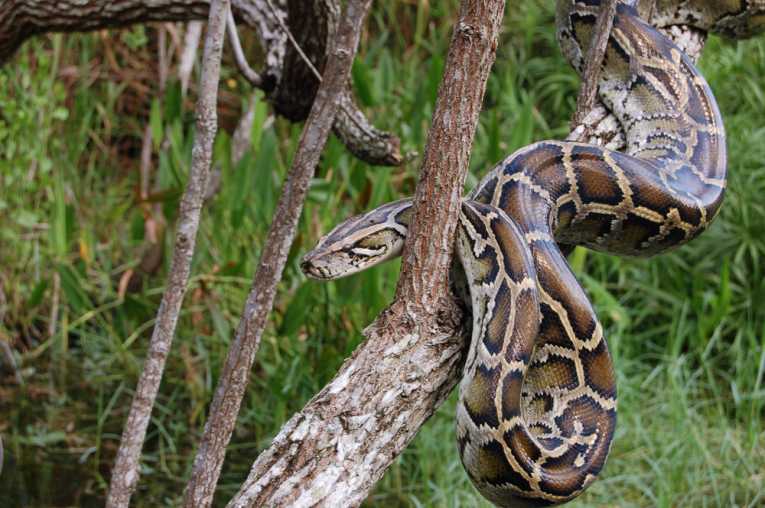Invasive species such as the grey squirrel in the UK or the rabbit in Australia have caused untold damage to the native flora and fauna of their new homes. Guam in the South Pacific had a problem so severe that the brown tree snake almost destroyed all local bird populations on the island and Florida has had one particular invasive species that is causing concern.
The Burmese python is one of the largest snakes in the world and is indigenous to Southeast Asia. With lengths often over 3.5 metres, it is a formidable predator. While it prefers rodents, it is not averse to attacking animals as large as deer. Despite its reputation (or perhaps because of it), it is quite a popular pet, and when owners have started having problems looking after them they have often been released into the wild.
The Florida Everglades National Park offers an ecosystem similar in many ways to the Asian tropical rainforests that would naturally be their homes. This favourable environment has led to a thriving population that studies have shown has placed a significant burden on the biodiversity of the area.
A study led by Michael Dorcas, of Davidson College, and published in the Proceedings of the National Academy of Sciences, has highlighted the main issues caused. Comparing road-kill surveys carried out before 2000 with those done between 2003 and 2011, alarming decreases were seen for some mammals, with bobcat observations decreasing by 87.5%, raccoon and opossum observations decreasing by over 98% and rabbits completely absent from the recent surveys.
The surveys also noted that the declines went hand-in-hand with increases in Burmese pythons. Areas without significant populations of the invasive species saw smaller changes in mammal numbers and areas free of pythons saw mammal numbers unchanged from previous surveys.

Close-up of a Burmese python via Shutterstock
Anecdotal evidence points to similar declines with tourists and local experts reporting severe drops in sightings of small mammals that had previously been abundant in the national park and reports of "nuisance raccoon incidents" vanishing after 2005.
The researchers suggested some theories as to why the impact has been so great and it seems that it may be a combination of factors. These might include the foraging grounds of the small mammals being the preferred hunting grounds of the pythons and also the fact that the Everglades National Park had been free of snakes large enough to predate mammals of this size until the recent establishment of breeding populations approximately 11 years ago.
There are additional worries that this work did not cover, including the possibility that bird numbers have been similarly affected.
Director of the U.S. Geological Survey, Marcia McNutt, has called for "decisive and deliberate human action" to resolve the issue.










